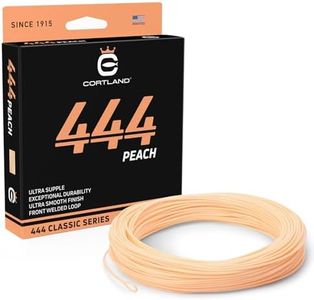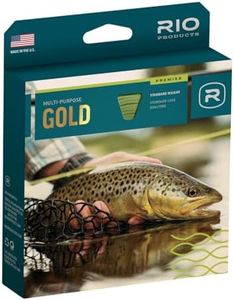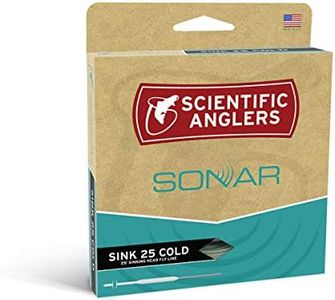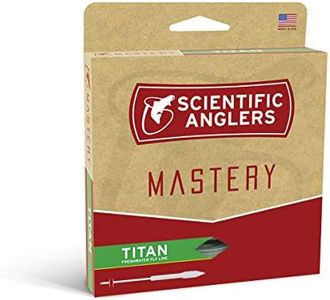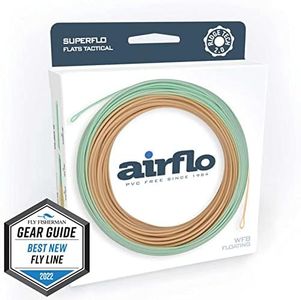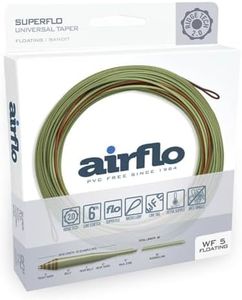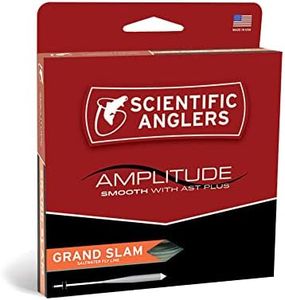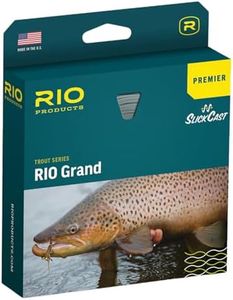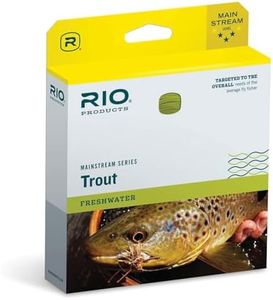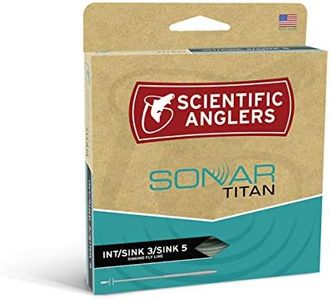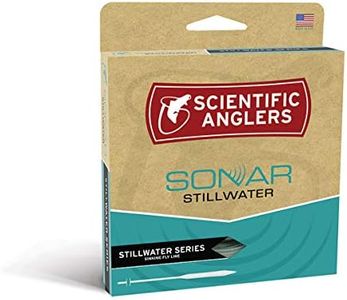We Use CookiesWe use cookies to enhance the security, performance,
functionality and for analytical and promotional activities. By continuing to browse this site you
are agreeing to our privacy policy
10 Best Fly Lines
From leading brands and best sellers available on the web.By clicking on a link to a third party's website, log data is shared with that third party.
Buying Guide for the Best Fly Lines
Selecting the right fly line is an essential step in improving your fly fishing experience. The fly line you choose directly affects how your rod casts, how your fly lands, and ultimately how successful you are in catching fish. Every fly fisherman has slightly different needs depending on the waters they fish, the type of fish they target, and their casting style. By understanding the key specs of fly lines, you can better match a line to your fishing environment and personal preferences, ensuring a more enjoyable and effective outing.WeightFly line weight refers to how heavy the first 30 feet of the line is, and it must match your fly rod's weight rating for optimal performance. This is important because using the incorrect weight can cause poor casting or even damage your gear. Light lines (weights 1-4) are suitable for small streams and delicate presentations, perfect for catching smaller fish like trout or panfish. Medium weights (5-7) are the most versatile, suitable for larger trout, bass, and even light saltwater fishing. Heavier lines (8 and above) are intended for large flies, windy conditions, or powerful fish such as salmon or pike. To choose the right weight, consider the type of fish you want to catch and where you will be fishing.
Line TaperThe taper of a fly line describes how its thickness changes from one end to the other, and it affects how the energy of your cast is transferred to the fly. The most common tapers are weight forward, double taper, and level. Weight forward lines have most of their mass towards the front, making them easier for beginners and great for long casts. Double tapers are symmetrical, allowing for precise, gentle presentations and can be reversed when one end wears out. Level lines have the same thickness throughout and are less common. Pick weight forward if you’re a beginner or need distance; choose double taper for subtle short casts or if you want a versatile line.
Floating vs SinkingThis spec tells you whether the fly line floats on the water surface or sinks beneath it. Floating lines are the go-to choice for most beginners and many situations because they are easy to see and control, making them great for dry flies and general-purpose use. Sinking lines are designed to get your fly deeper below the surface, which is helpful when targeting species that feed at depth or fishing in lakes and deep rivers. There are also intermediate lines that sink slowly. Choose a floating line for most stream and surface fishing, and a sinking or intermediate line when you need your flies to reach deeper water.
LengthFly lines typically come in standard lengths, usually around 90 feet, which is ample for most fishing situations. The length matters if you plan to fish exceptionally large bodies of water that require very long casts. However, for most anglers, a standard-length line is ideal and easy to handle. Only consider longer or specialty lines if you know you need extra distance for your fishing style or environment.
Line ColorThe color of a fly line is mainly about visibility. Brightly colored lines are easy to see, which helps track your casts, but may spook fish in clear water. Subtle or natural colors blend into the environment, minimizing the chance of scaring fish. If you fish in clear, calm waters for wary fish, pick a subtle color. If you’re learning or fishing in less clear water, a brighter color makes casting and mending easier to see.
